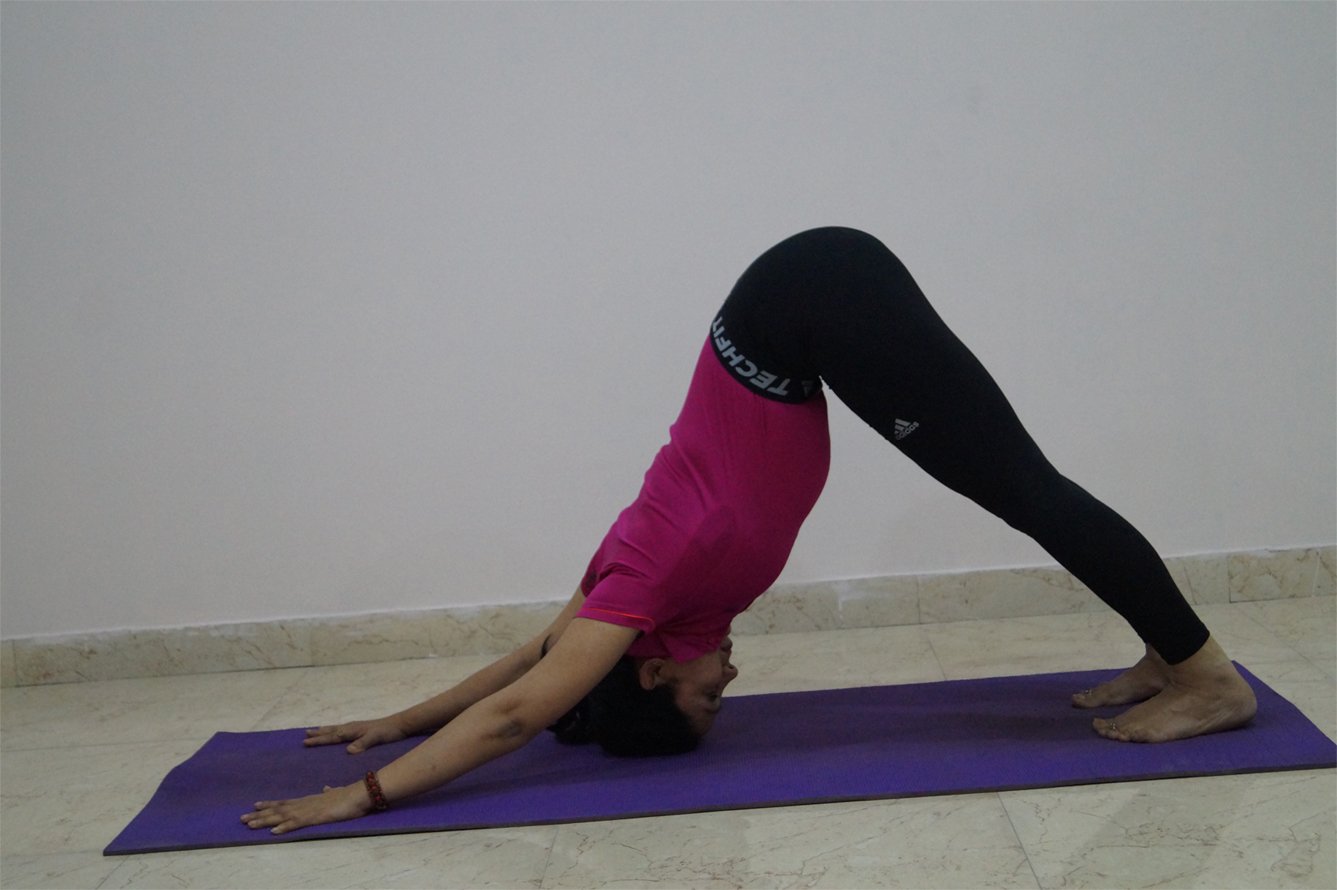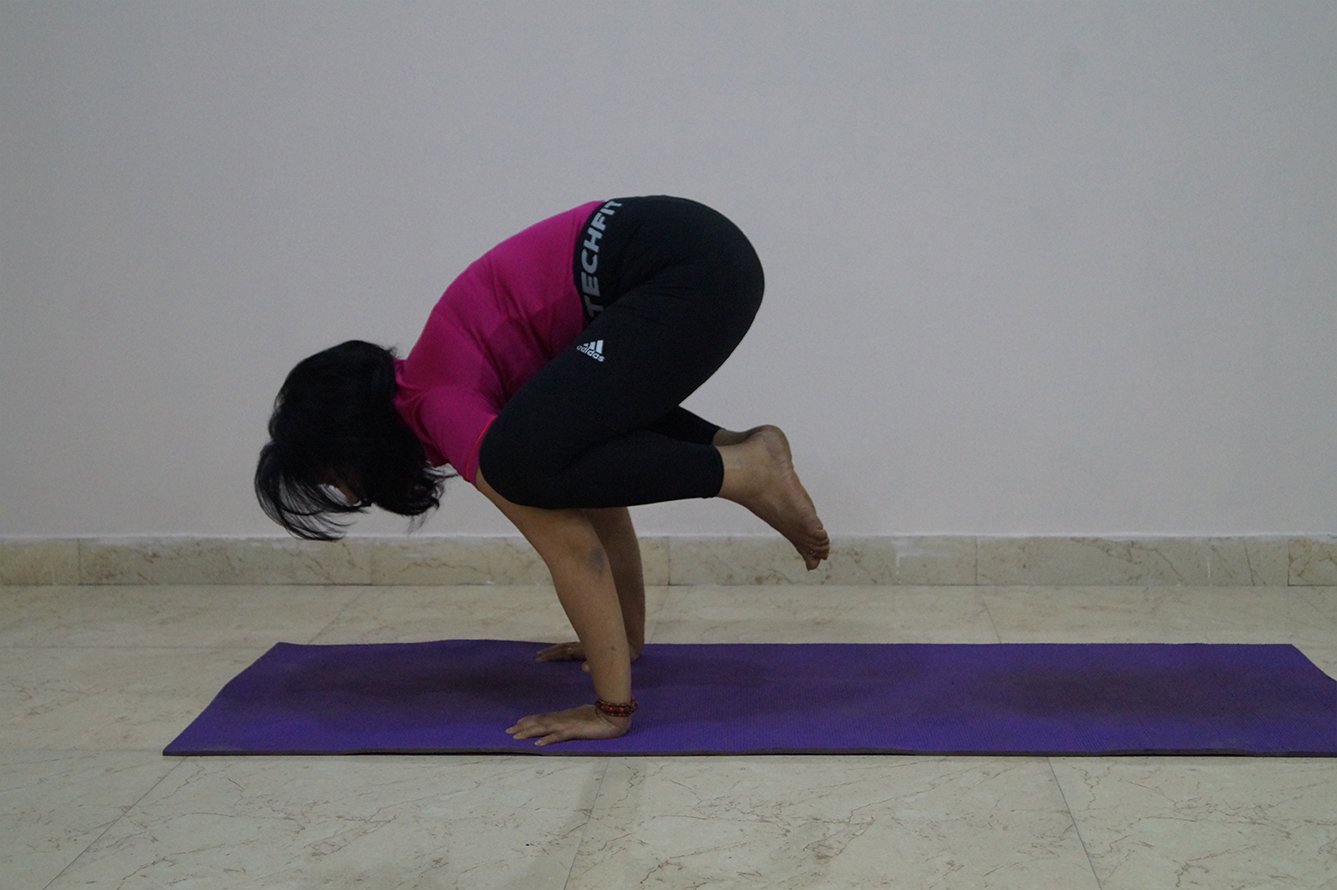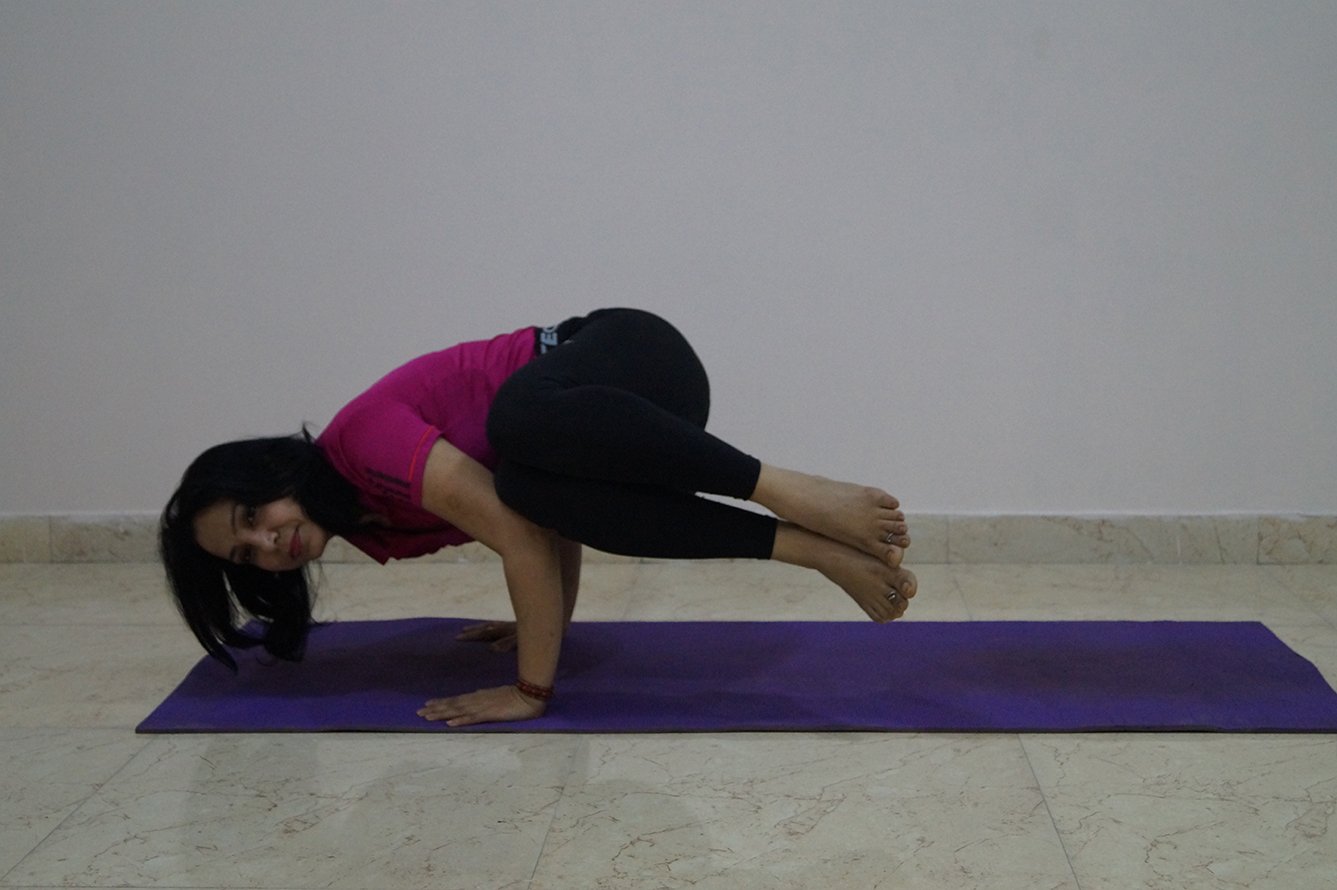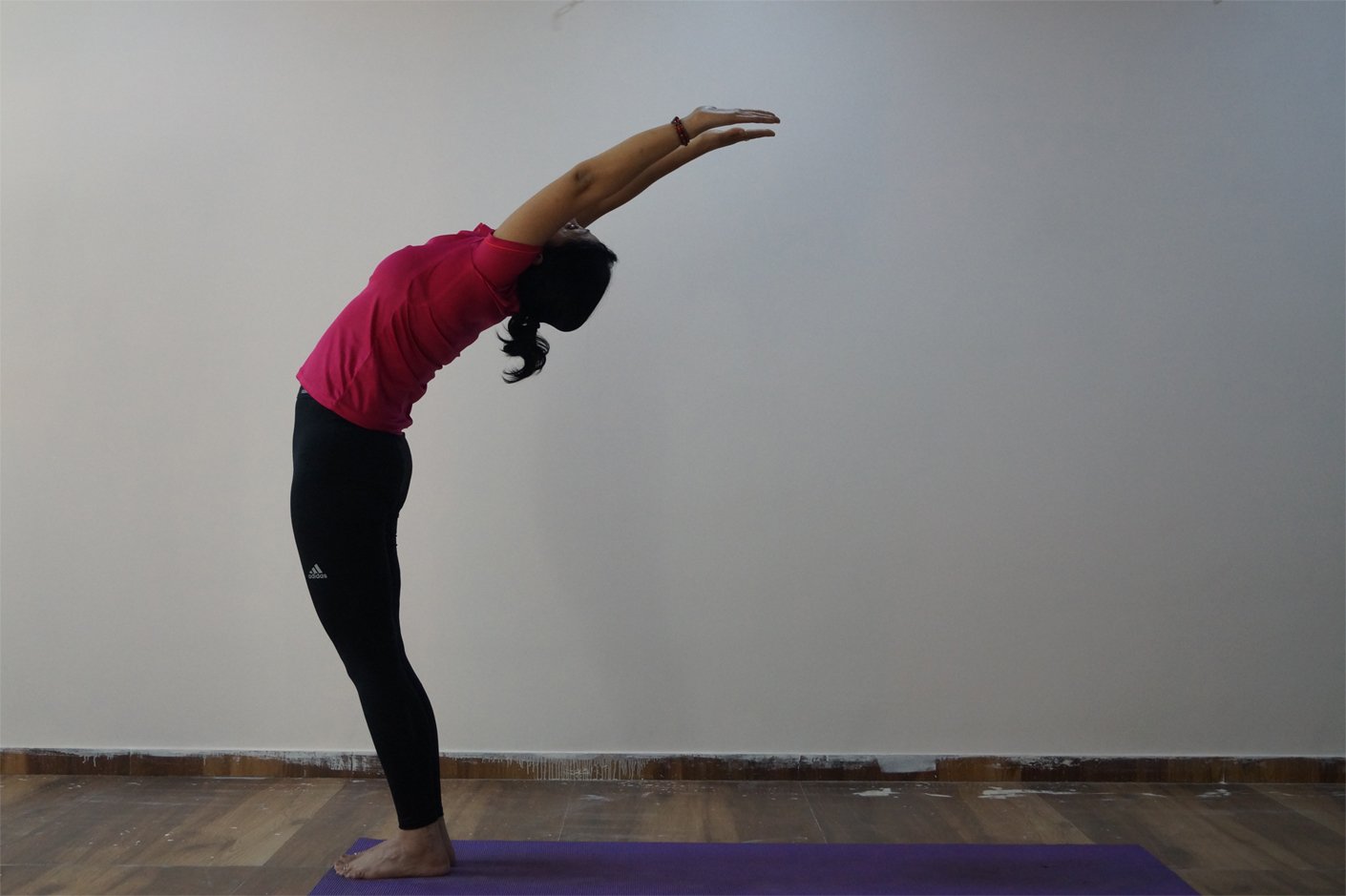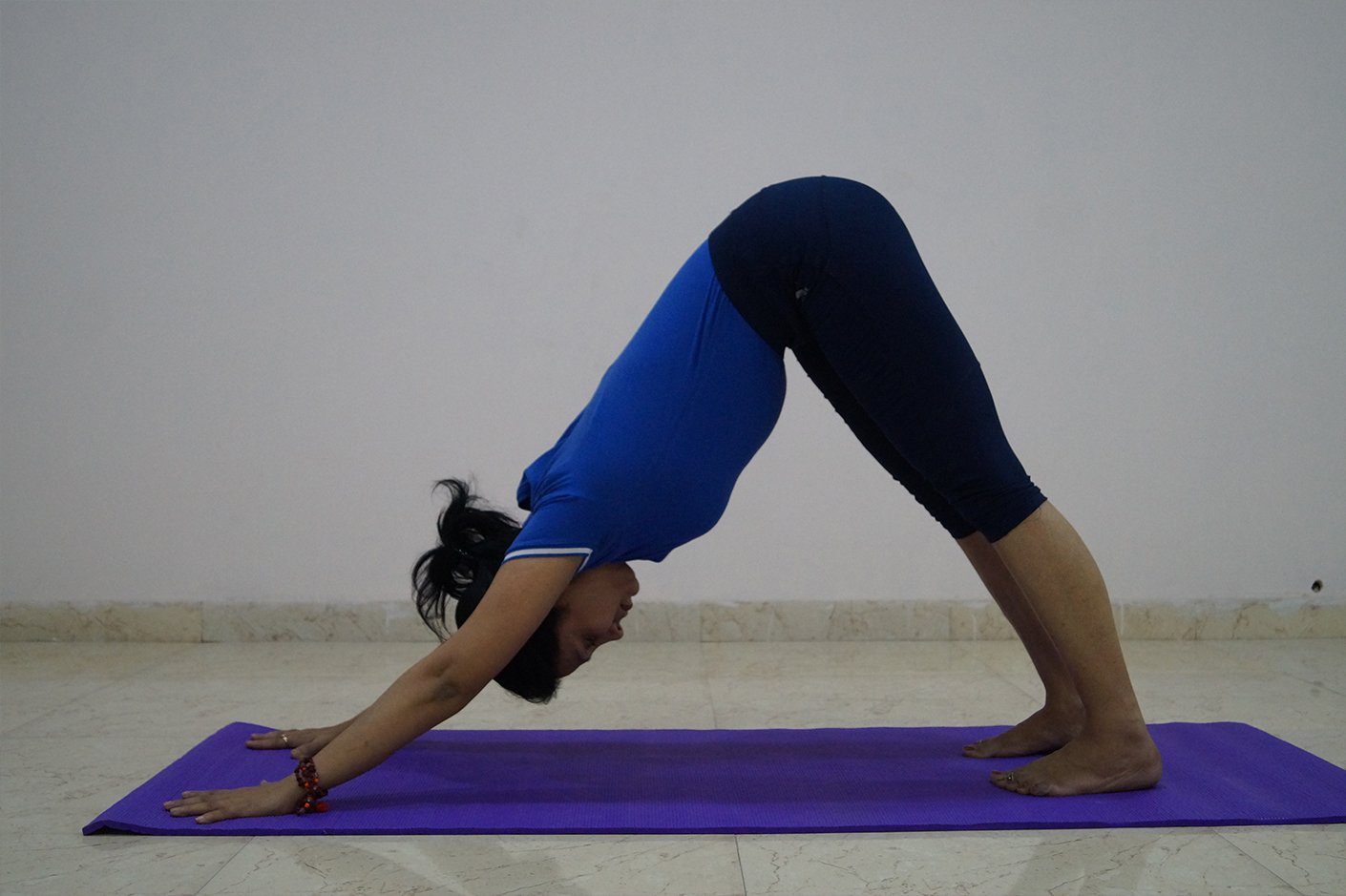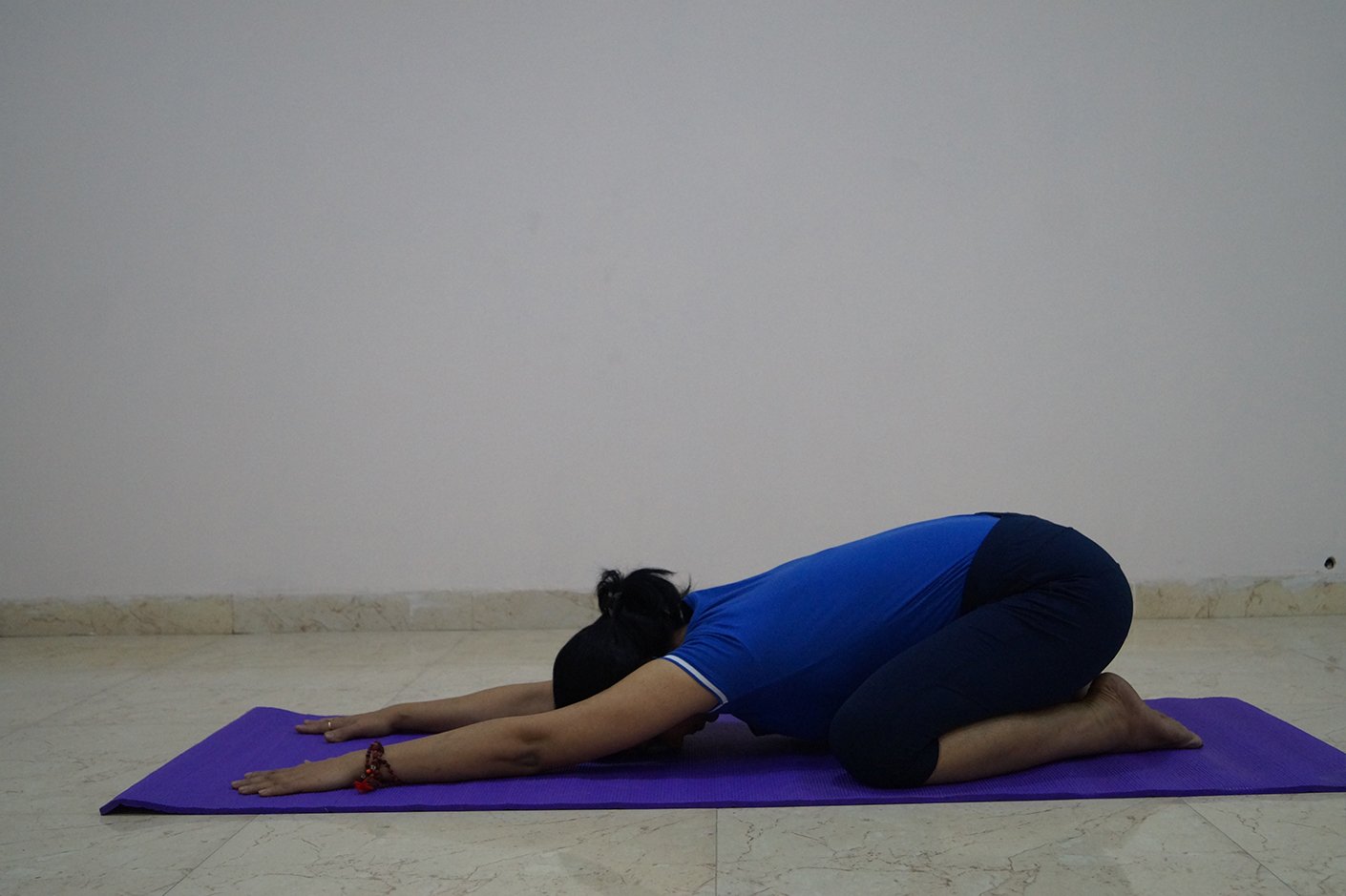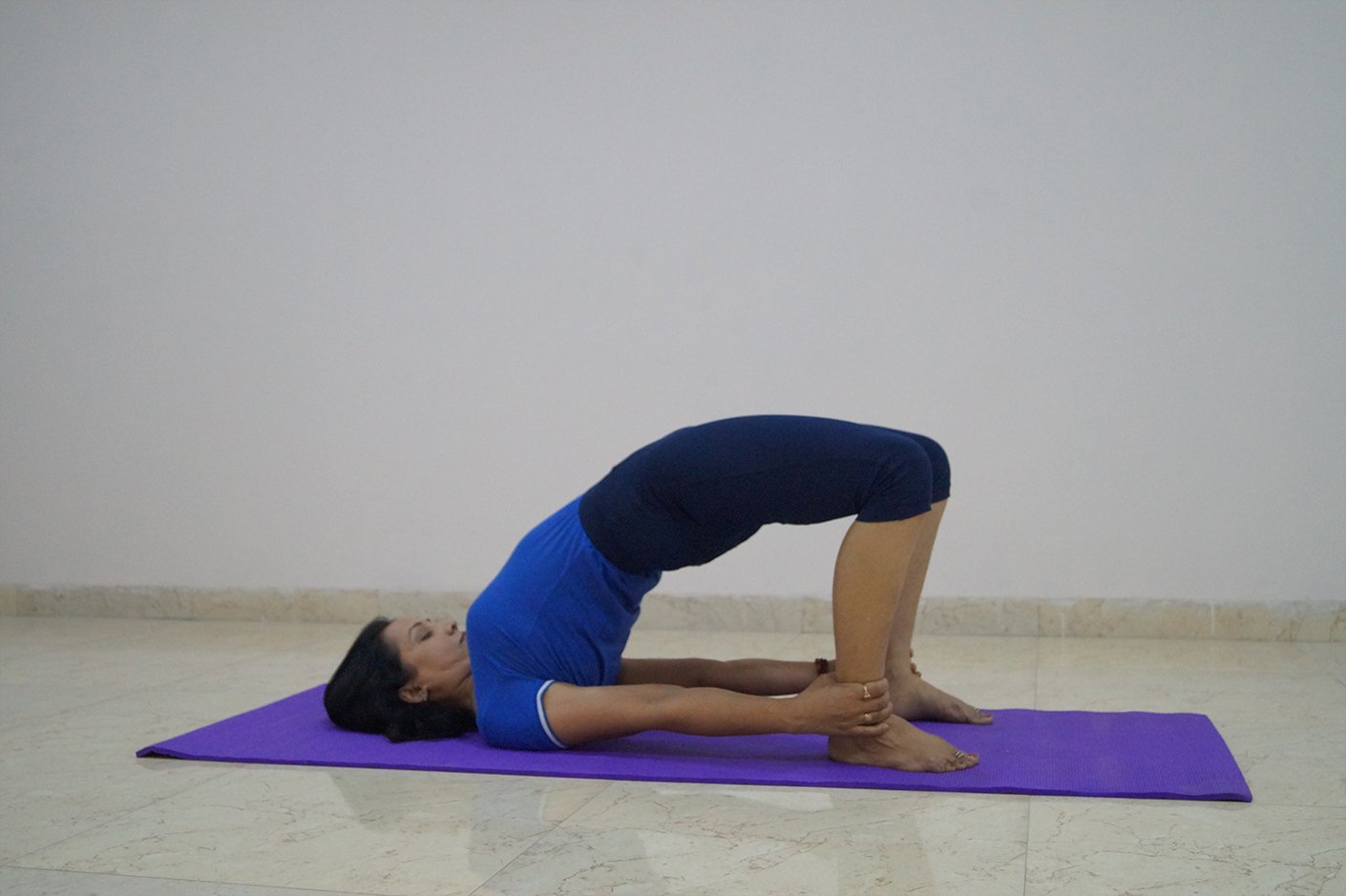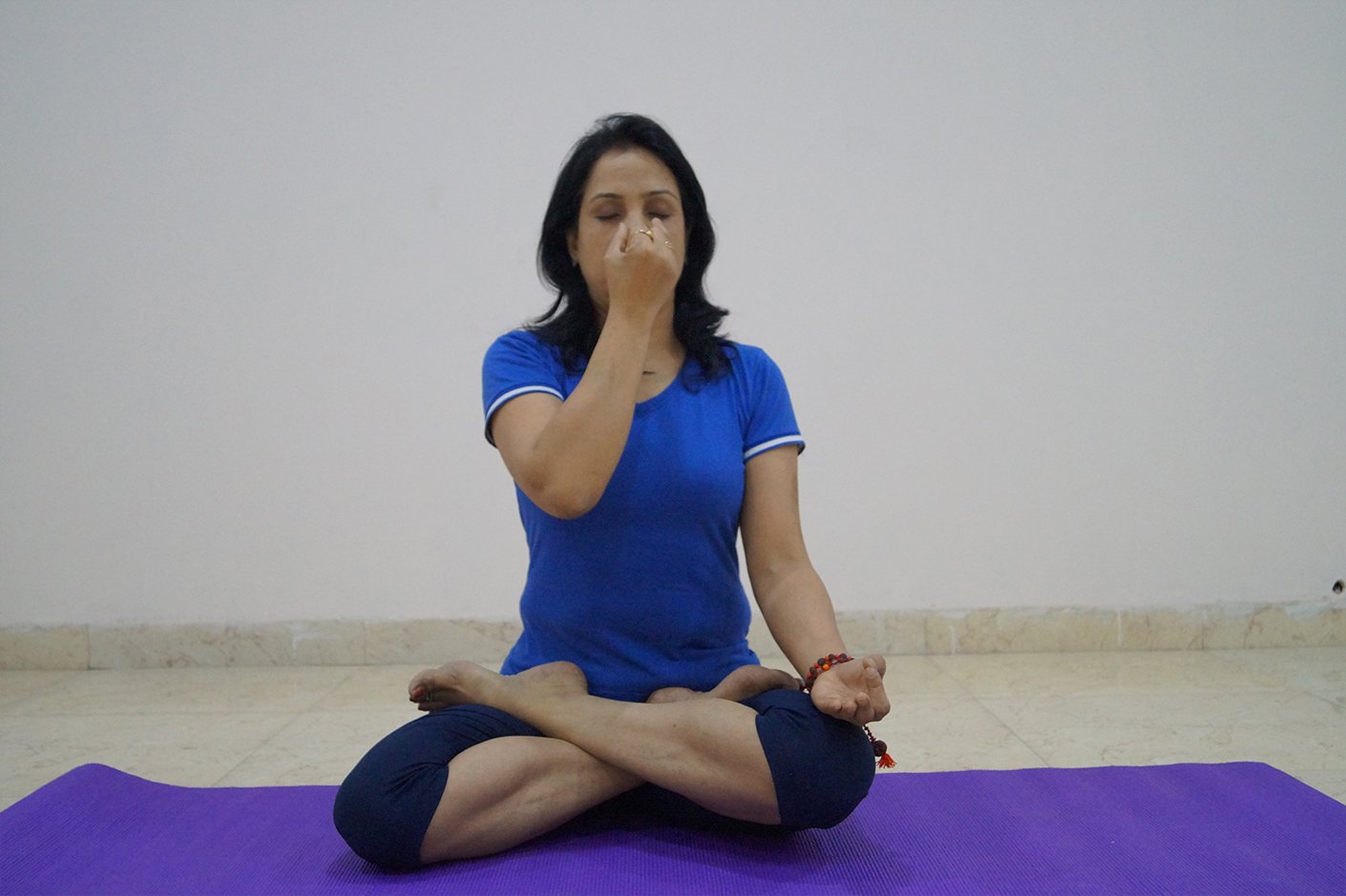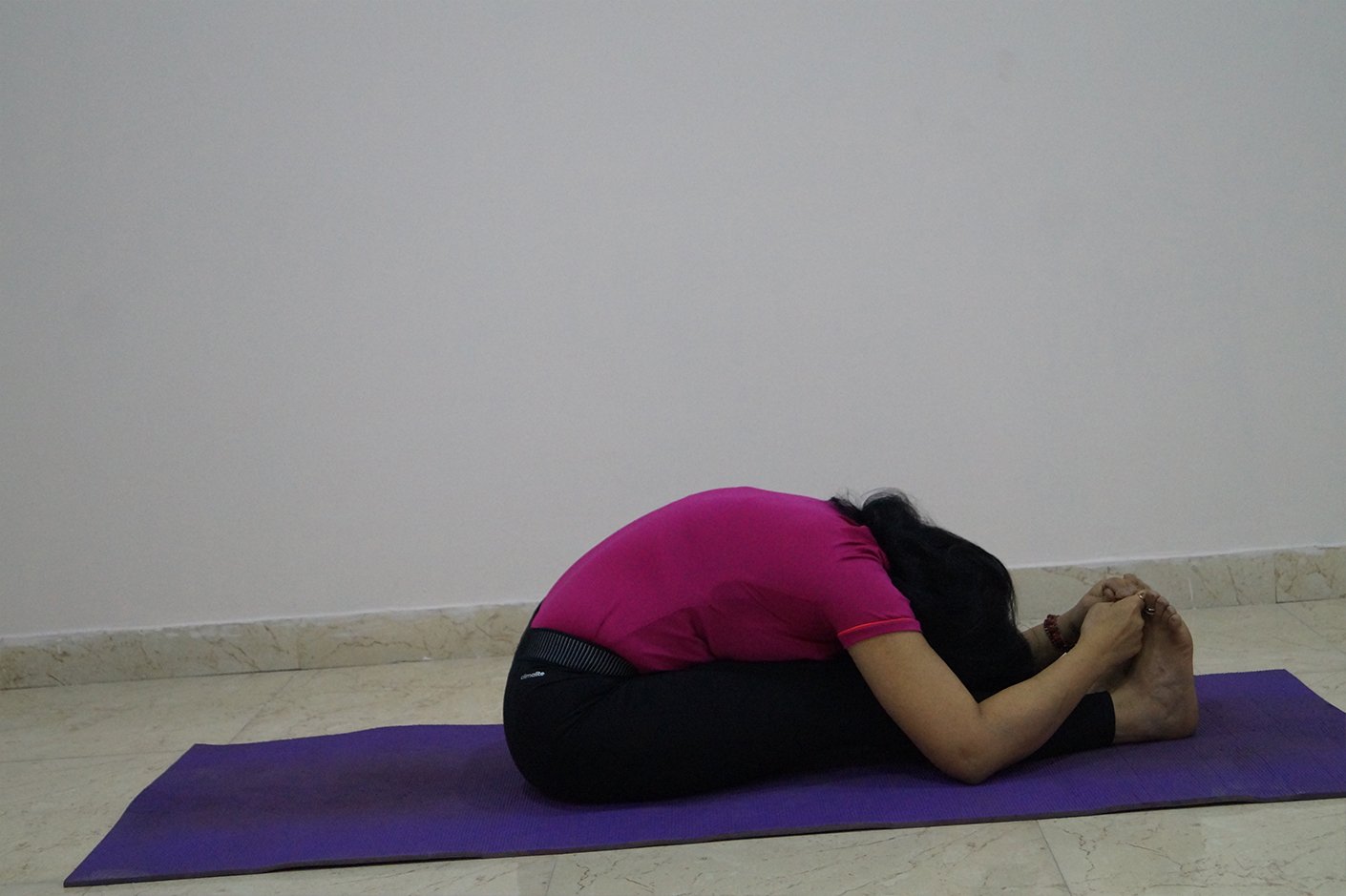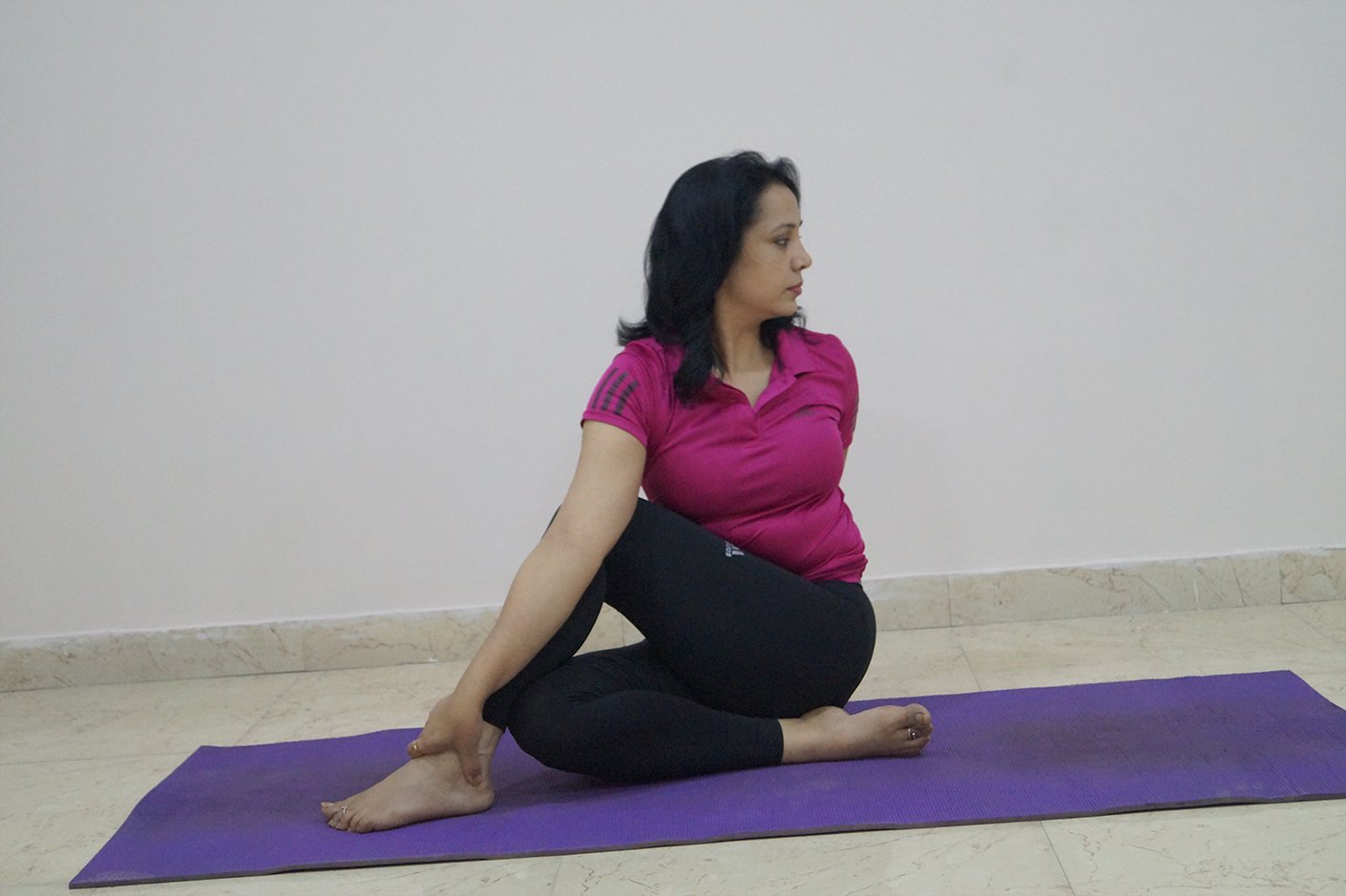Society of Environmental and Occupational Health

Society of Environment and Occupational Health

Society of Environment and Occupational Health
yoga and health
Balance Digestive Fire (Jatharagni) thru Yoga
“When I prayed for success I forgot to ask for sound sleep and good digestion” Mason Cooley. Digestion is great secret of life.
Digestion is important for breaking down food into nutrients, which the body uses for energy, growth, and cell repair. Food and drink must be changed into smaller molecules of nutrients before the blood absorbs them and carries them to cells throughout the body. The body breaks down nutrients from food and drink into carbohydrates, protein, fats, and vitamins. This includes not only tangible substances like food and drink, but also our experiences, emotions, and the impressions we take in via our sensory portals, namely our eyes, ears, nose, tongue, and skin.
Agni is the Sanskrit name for the Digestive fire. According to Ayurveda a balanced Agni is vital for health. The strength of the body to resist disease and also its physical strength are directly related to its heat energy determining the metabolic processes of the body. Disturbances to Agni are usually the chief causes of disease. As per Ayurveda there are thirteen types of Agni in the body and mind according to the conversion and the transformation made. The most important of them is the Jatharagni, the gastric fire, responsible for digesting food eaten by correlating hydrochloric acid in the stomach and the digestive enzymes and juices secreted into the stomach, duodenum and the small intestines. If digestive Agni is low and the capacity is impaired, one may experience pain, discomfort, feeling of heaviness or gases gurgling, constipation or loose stools. Agni has been divided into 13 types according to the function and site of action:
Jatharagni – one Agni present in the stomach and duodenum. Jatharagni is considered to be the prime because each and every nutrient that one ingests first comes to the stomach and duodenum and is subjected to the action of Jatharagni. Jatharagni plays a key role in digestion of food-stuffs composed of the five basic elements and transforms it for utilization by the respective tissues. Jatharagni separates food material into the sara (essence portion) and kitta (waste products) in the human body. Jatharagni is also classified into four categories according to its performance of digestion in the human being. Vishamagni (Variable), Tikshagni (High), Mandagni (Low), Samagni (Normal)
Bhutagni – five Agni from five basic elements. There are five Agnis in each of the five basic elements, namely – Parthiva (earth), Apya (water), Tejas (Agni), Vayavya (vayu) and Nabhasa (akash).
- Rasagni present in the Rasa Dhatu(Plasma)
- Raktagni present in the Rakta Dhatu(Blood cells)
- Mamsagni present in the Mamsa Dhatu(Muscle tissues)
- Medagni present in the Meda Dhatu(Fatty tissues)
- Asthyagni present in the Asthi Dhatu(Bones)
- Majjagni present in the Majja Dhatu (Bone Marrow & nervous tissues)
- Shukragni present in the Shukra Dhatu(Sperm and Ovum)
Proper digestion, with a strong Agni, plays a central role in our physical and emotional wellbeing. As Ayurveda recognizes, We are not what We eat, but “We are What We digest.” By making choices that strengthen our digestive ability, we form the foundation for good health and vitality. Yoga plays vital role in improving digestion. A healthy stomach can help keep acne at bay, make you less irritable, helps keep your body safe from diseases like indigestion and in some cases even cancer. Ayurveda says that an unhealthy stomach can lead to poor eyesight. Try these Yoga poses to improve digestion, before you begin your yoga practice, make sure you have an empty stomach, allowing 3-4 hours to lapse after your last meal.
13 Yoga Poses to Improve Digestion
1.Uttanasana (Standing Forward Bend)
This transitional inversion posture stretches your hamstrings, opens up your lower back and relieves tension in the spine and neck. Doing this pose properly, with the pelvis hinging forward and the lower back staying neutral, allows the spine to relax and elongate, increasing blood flow to the brain. The spine moves into the primary curve, known as the natural shape from when you were in the womb, subconsciously making you feel safe and comforted. Improves digestion, relieves stomach ache.
How to do it: Stand with your feet hip-width apart. Spread your toes evenly on your mat. As you exhale, bend forward from your hips, keeping your back straight. With your knees straight or slightly bent, depending on your flexibility, rest your hands on a block or the ground beside your feet. Hollow out your belly. Inhale, lift and lengthen your torso. Exhale, relax and fold more deeply.

Precautions: Don’t practice this pose in Diarrhea, osteoarthritis of the knees, scoliosis or excessive curvature of Lumber spine. In back injury do this pose with bent legs or use wall and do ardha(half) uttanasana legs perpendicular to your torso, and arms parallel to the floor. For slipped discs or other spinal disorder: forward bend to the point of having a flat back. Don’t put the head between the knees. In Dizziness or Acidity: Place feet hip width apart.
2.Ushtrasana(Camel Pose)
Stretches the front of the body including the chest, abdomen, and quadriceps. Improves spinal mobility. This pose creates space in the chest and lungs, increasing breathing capacity and helping to relieve respiratory ailments. Ushtrasana also stimulates the kidneys, which improves digestion. This pose energizes the body and helps to reduce anxiety and fatigue.
How to do it: Stand up on your knees with your hips stacked over the knees. Take blanket or fold your mat under your knees if they are sensitive. Draw your hands up the side of your body until your thumbs reach your arm pits. Hook your thumbs into your pits for support as you start to open your chest toward the ceiling. Maintain the position of your chest as you reach your hands back one at a time to grasp your heels. If you need a little more height, tuck your toes under. Otherwise the tops of the feet can be flat on the floor. Bring your hips forward so that they stay over your knees. If it feels good, let your head come back, opening your throat. If that doesn’t work for your neck, you can keep the chin tucked instead.

Precautions: Do not practice this pose if you are currently experiencing high or low blood pressure, insomnia, hernia or a migraine. Also avoid this pose if you have a low back or neck injury during pregnancy. Always work within your own range of limits and abilities. If you have any medical concerns, talk with your doctor before practicing yoga.
3.Bhujangasana (Cobra Pose)
In Sanskrit language “Bhujang” stands for “Cobra” and also while practicing Bhujangasana the entire body structure looks like hooded snake that is why it is also known as “Cobra Pose”. This pose opens up the chest the chest, improves breathing, reduces stress, strengthens the shoulders, back and abdomen and more importantly improves circulation and digestion. The pose is great in helping the stomach acids function normally hence very effective in beat symptoms like acidity, constipation etc.
How to do it: Lie flat on your stomach. Place your hands on the side and ensure that your toes touch each other. Then, move your hands to the front, making sure they are at the shoulder level, and place your palms on the floor. Now, placing your body’s weight on your palms, inhale and raise your head and trunk. Note that your arms should be bent at your elbows at this stage. You need to arch your neck backward in an attempt to replicate the cobra with the raised hood.
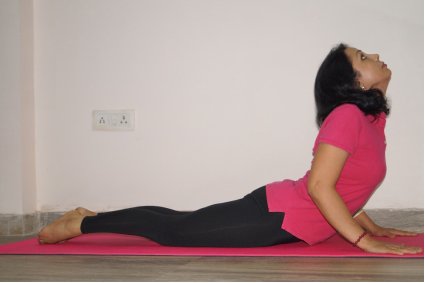
But make sure your shoulder blades are firm, and your shoulders are away from your ears. Press your hips, thighs, and feet to the floor. Hold the asana for about 15 to 30 seconds while breathing normally. Feel your stomach pressed against the floor. With practice, you should be able to hold the asana for up to two minutes. To release the pose, slowly bring your hands back to the sides. Rest your head on the ground by bringing your forehead in contact with the floor. Place your hands under your head. Then, slowly rest your head on one side and breathe.
Precautions -People suffering from harmful ailments like hernia, hyperthyroidism or intestinal tuberculosis should not practice this asana. One should not perform this asana if suffering from peptic ulcers, diarrhea, Carpal tunnel syndrome, Headaches, Recent abdominal surgeries. Avoid practice during pregnancy.
4. Paschimottanasana (Seated Forward Bend)
Seated Forward Bend is a basic yet challenging pose with several benefits in addition to relieving stress and anxiety. Additional benefits include: stretches the hamstrings, spine, and lower back, improves digestion, relieves symptoms of PMS and menopause, reduces fatigue, stimulates the liver, kidneys, ovaries, and uterus. It increases the peristalsis of the bowels, relieves constipation, and removes sluggishness of liver, dyspepsia, belching and gastritis. In the Book Hatha Yoga Pradipika, chapter 1, verse 29 describes about this asana : “This most excellent of all asanas, Paschimottanasana, makes the breath flow through the Sushumna, rouses the gastric fire, makes the loins lean, and removes all diseases.”
How to do it: Sit on mat both legs outstretched. Bring your arms straight out to the sides and up over your head, reaching toward the ceiling. Inhale and draw your spine up long. As you exhale, begin to come forward, hinging at your hips.
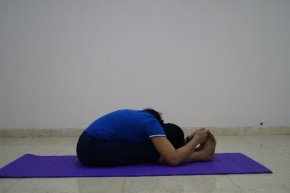
Imagine your pelvis as a bowl of water that is tipping forward. On each inhale, lengthen your spine you may come a bit out of your forward bend to do this. On each exhale, deepen into your forward bend. Keep the neck as the natural extension of your spine, neither cranking it to look up nor letting it go completely. Take hold of your ankles or shins, whichever you can reach. You can also use a strap around your feet. Keep your feet flexed strongly throughout. Beginners’ Tips: 1. Put padding (a blanket or bolster) under your seat if it’s hard for you to sit up straight when your butt is flat on the floor. 2. Imagine your belly coming to rest on your thighs, rather than your nose coming to your knees. This will help you keep your spine long.
Precaution: Don’t practice this asana in Back injury, Diarrhoea and Asthma
5. Ardha Matsyendrasana (Half spinal twist)

Twists in yoga poses bring us a host of benefits. According to yogic teachings, they squeeze the internal organs and encourage the flow of oxygenated blood while eliminating toxins and metabolic waste products. Twisting poses can also help reduce abdominal bloating and digestive discomfort.
How to do it: Sit with legs straight and stretched in front of you. Bend the right leg, lift it and place in on the left side of the stretched left foot. Bend the left leg and bring to close to the body. Place it under the right buttocks. Take the left arm around the right leg and grab the toes of the right leg with the left hand. The left armpits will be close to the right knee. This may be difficult in the beginning. You need a flexible back and spine to achieve this. If you cannot hold the toes, then hold the ankles or part the lower leg to start with. Later with practice you will be able to hold the toes. Now turn to towards the right and simultaneously move the right hand behind the back. Twist the back and the neck to as far right as possible. Exhale while twisting the back and neck. Remain in this position as much as possible. Breathe normally and slowly in this final position. You may maintain the position from few seconds to a minute, as per your comfort. Return to the original position (both legs stretched forward). Inhale while coming back to the original position. Repeat with the other leg.
6. Marjariasana (Cat Pose)
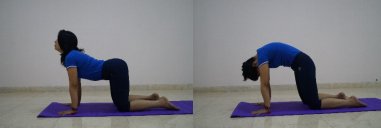
The cat pose soothes and stretches the lower back, relieving stress while gently massaging the spine. Works into and massages the abdominal organs, and increasing circulation to these areas giving you a feeling of lightness. Breathing deeply in these poses will massage your organs as you alternately compress and lengthen the intestines, bringing fresh blood to the epithelial cells, which are responsible for healthy gut function.
How to do it: Come on to yours fours. Form a table top position. Try arching and rounding the back 10 times in a row while focusing on deep inhaling and exhaling. In the cat pose, you’re releasing stress in the spine. It relaxes the mind & improves the blood circulation. It’s one of those transition poses that takes us from the outside world in
Precautions: If you have a sensitive neck, do not crunch the back of the neck too much as you look up. It is best to look forward to avoid the strain. Also, make sure your shoulders are away from your ears. Consult a doctor before you do this pose in case you have a neck injury. It is best to practice yoga under the supervision of an expert
7. Setu Bandhasana (Supported Bridge Pose)
This is great backbend opens up your chest and stretches your lumbar spine and psoas, the deep hip flexor muscle that connects your torso to your legs. This posture helps release the muscle fatigue that may be caused by poor digestion. Keeps the back flexible and healthy, opening up the frontal heart, where flexibility in the body mirrors flexibility in the mind.
It mainly strengthens the lower back and abdominal muscles and opens the chest. It is strongly recommended to people suffering from pain either in any part of the spine or in the hip joints. It has curative and corrective effects on the disorders of the shoulder joints, neck, arms and the palms.
How to do it: Lie flat on your back, arms by your sides, palms flat. Bend your knees. Place your feet hip-width apart and parallel with heels close to your sitting bones. Press down into your feet and hands and lift your hips off the mat without squeezing your glutes. Place a block below your sacrum, the triangular bone at the bottom of your spine, to minimize stress in your back. Persons suffering from Neck injury, lumbar spondylitis should consult yoga expert.
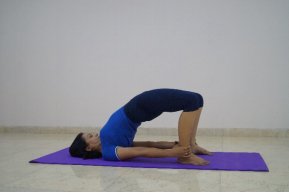
8. Halasana (plough pose)
This asana massages the digestive organs, and therefore, improves digestion and regulates appetite. It regulates metabolism and helps in weight loss. It is an excellent asana for diabetic patients because it normalizes the blood sugar levels. It flexes the spinal cord and releases the strain in the back, thereby enhancing posture and reducing any pain. It helps relieve the symptoms of menopause and stimulates the reproductive system. Halasana heals and calms the sympathetic nervous system. It helps to balance the secretions in the glands, specifically thyroxin and adrenaline. It also removes toxins from the urinary and digestive tracts. If you have had a history of high blood pressure, this asana helps relieve hypertension as well.
How to do it: Lie flat on your back, with your arms placed beside your body and your palms facing downwards. Inhale, and lift your feet off the ground using your abdominal muscles.
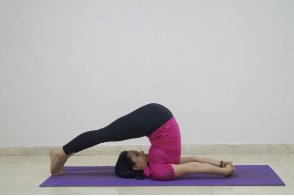
Your legs should be at a 90-degree angle. Use your hands to support your hips and lift them off the floor. Bring your feet in a 180-degree angle, such that your toes are placed over and beyond your head. Make sure your back is perpendicular to the ground. Hold the position for a minute while focusing on your breathing. Exhale, and gently bring down your legs. Avoid jerking your legs while releasing the pose.
Precautions: Avoid practicing this asana if you have Diarrhea, menstruation, neck injury and in pregnancy. If suffering from hypertension and asthma support your legs with props.
9. Vajrasana
Vajrasana is a kneeling pose, and it takes its name from the Sanskrit word Vajra, which means diamond or thunderbolt. Asana means pose. The Vajrasana regulates blood circulation in the lower pelvic region. Sitting on your legs reduces the blood flow in the legs and increases it in the digestive area, therefore increasing the efficiency of the digestive system.
How to do it: Kneel down, stretching your lower legs backward and keeping them together. Your big toes should cross each other. Gently lower your body such that your buttocks are resting on your heels and your thighs on your calf muscles. Place your hands on your knees, and set your gaze forward with your head absolutely straight. Turn your attention to your breathing. Be fully aware of how you breathe and carefully observe as you inhale and exhale. You could close your eyes to concentrate on your breathing and to calm your mind. Try to stay in this position for a minimum of 5 to 10 minutes.
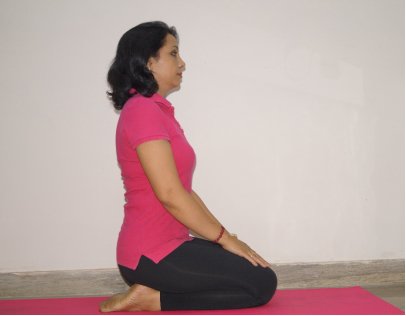
Precautions: It is best to avoid this asana if you have a knee problem or have undergone surgery in your knees recently. Pregnant women should keep their knees slightly apart when they practice this asana so that they avoid putting pressure on their abdomen. If you are suffering from any spinal column ailments on the lower vertebrae, it is best to avoid this pose. Those suffering from intestinal ulcers, hernia, or any other problems related to the large or small intestine should practice this pose under the guidance of a yoga instructor
10. Ardha Pawan Muktasana :

This asana’s name reflects its benefits, that is, the release of unnecessary gases from the body, especially the stomach. It strengthens the lower back and stretches the spinal cord. It is thus particularly good for treating back pain. The posture helps to massage the abdomen and the digestive system thereby eliminating wind and preventing constipation. It stimulates and directly exercises internal organs such as the pancreas, the intestines and other organs around the stomach. It is believed to help in the management, even prevention, of diabetes. It massages the pelvis and the reproductive organs. It helps reduce discomfort due to constipation, gas and other digestive disorders as well as during menstrual periods.
How to do it: This pose compresses the ascending colon on the right side and descending colon on the left, stimulating the nerves to aid elimination. First, hug your right knee in toward the right side of your ribcage. Keep pressing your straight left leg into the earth as you clasp your hands around your right shin to pull it closer to the floor. Hold for 1 to 2 minutes. Repeat on the other side. Modifications for high blood pressure: Those suffering from high blood pressure should not press their folded leg too much nor raise the head. Keep the head on the ground
11. Adhomukha Savanasana (Downward Facing Dog):
This inverted pose leaves you energized and rejuvenates the body. It increases blood circulation to the brain. Calms the mind and helps relive headache, insomnia, fatigue and stress.
How to do the pose: Come onto the floor on your hands and knees. Set your knees directly below your hips and your hands slightly forward of your shoulders. Spread your palms, index fingers parallel or slightly turned out, and turn your toes in.
As you breathe out lift the hips up, straightening the knees and elbows, form an inverted V-shape with the body. Press your hands into the ground. Widen through the shoulder blades. Keep the neck lengthened by touching the ears to the inner arms, don’t let it hang. Stay in this pose anywhere from 1 to 3 minutes. Then bend your knees to the floor with an exhalation and rest in Child’s Pose.
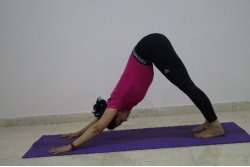
12. Utthita Trikonasana (Triangle Pose)
This standing posture stretches your hips, oblique, hamstrings, shoulders, chest and spine. The feeling of stress relief come from the extension of the spine out of the hips as well as the deep breathing. It also helps improve digestion and ones rate of metabolism also stress related stomach ailments like constipation.
How to do it: Stand with your feet wide apart facing the side of your mat. Raise your arms out to the sides. Turn your right foot forward toward the front of the mat. Turn your left foot slightly in toward your right. Look at your right arm. Extend your torso directly over your right leg, bending from your hips. Rest your right hand on a block. Raise your left hand above your head making a straight line between your left and right arm. Gaze at the tips of your left fingers.
Do not do this pose if you suffer from any neck or spinal injuries. If you do have high blood pressure perform this exercise only under supervision.

13. Balasana (Child's Pose)
The calming child’s pose is a resting posture that can help quiet the mind, easing stress and anxiety while gently stretching the back. It’s also good for the nervous system and lymphatic system. It’s very restorative child-like and allows us to come inward to ourselves. Since this pose relaxes you it is best to beat stress and relieve gastrointestinal symptoms related to the condition. So, after that tiring day at work, this is the best asana for you.
How to do it: Sit on your heels. Keeping your hips on the heels, separate your knees as wide as your hips, bend forward extend the spine from tail bone and maintaining the extension lower your forehead to the floor. Lay your hands on the floor alongside your torso, palms up, and release the fronts of your shoulders toward the floor. Stay in the pose from 1 to 3 minutes. To come up, first lengthen the front torso, and then with an inhalation lift from the tailbone as it presses down and into the pelvis.
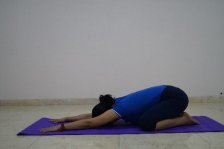
Note: All poses should be done under guidance of yoga expert and consult a doctor before practicing.

